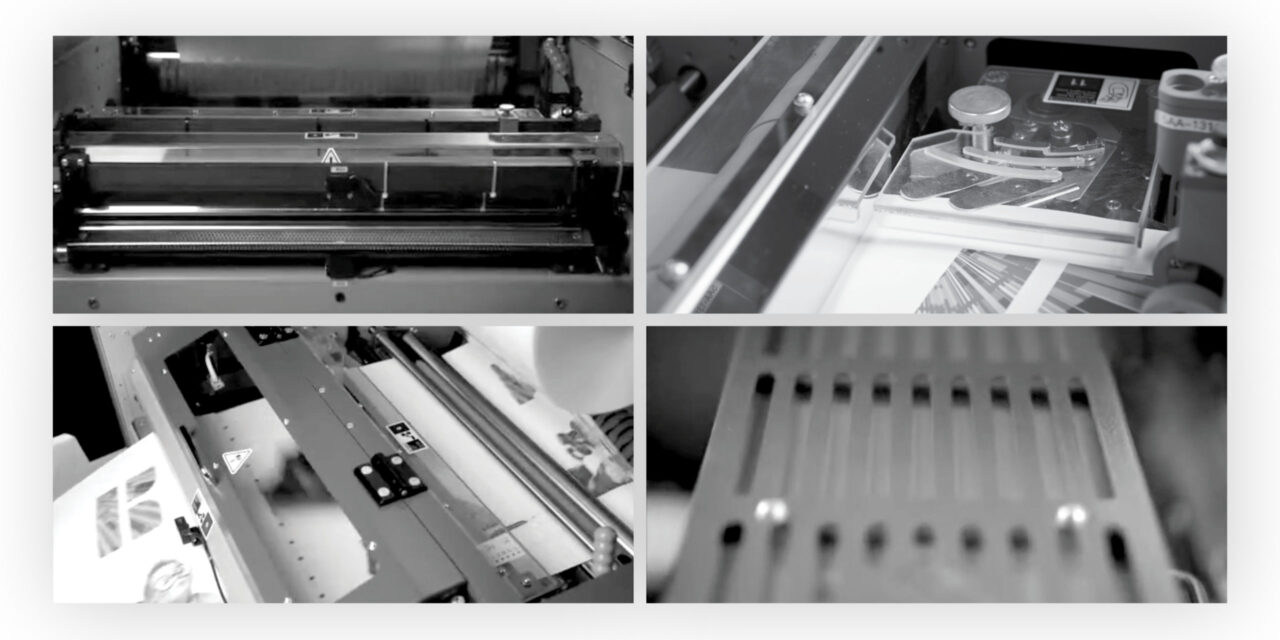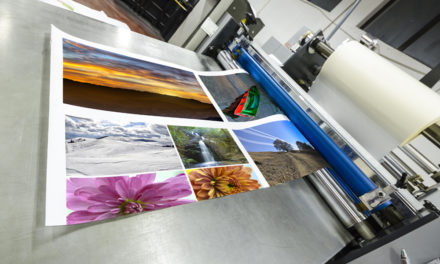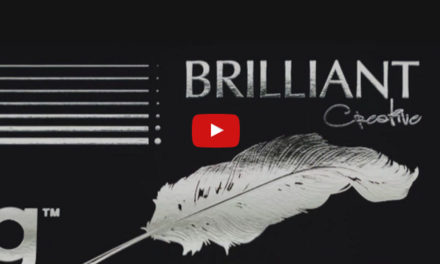SMALL DETAILS, BIG IMPACT
While lamination is a simple process in many ways, things can quickly become complicated when you have to make decisions about which piece of equipment is the best fit for your operation. With huge variations in production volumes, materials, and applications across general commercial print, choosing the right laminator is pivotal to any printer’s success. Still, it can be hard to keep track of all the components that will have an effect on your workflow. Drawing on the expertise of Nobelus® equipment managers and service technicians, we’re going to look at one of the smaller but more important components on any laminator: the separation mechanism.
AN OVERVIEW OF WEB SEPARATION IN LAMINATION
As any sheet-fed laminator operator will know firsthand, each sheet in a lamination run is initially connected to the next by the film. At the very end of the process, right before the laminated sheets are dropped into the receiving tray, a mechanism on the laminator separates each sheet with enough speed and accuracy to create a stack of neat, even prints. The process is the same whether the laminator is running folding cartons, photographs, book covers, or any other application.
Several methods can be used to separate the web (another name for the thin, flexible substrates and films used in lamination) automatically during the lamination process. These methods vary in speed, the type of tool used, and which material types they can separate. Even though each method may look similar on the surface and is used with the same ultimate goal in mind, their subtle differences will greatly affect their efficacy on certain print runs. We’ll take a quick look at a few of the most frequently seen types to understand how they work and when they should be used.
SINGLE-SIDED LAMINATION SEPARATION METHODS
Single-sided lamination will allow more flexibility in the separation method used as the laminate layer will be thinner, typically ranging from 0.8 mil to 2.0 mil thick. All single-sided laminating runs with a sheet overlap that leaves three sides completely clear and one side cut against the edge post-separation.
1. BURSTING SEPARATION
By far the simplest and most popular choice in single-sided lamination, the bursting separation method is the only one that doesn’t necessitate the use of a knife. Instead, strategically placed perforators prick tiny holes into the laminate, weakening the film just enough to prepare it for separation. After the laminate and substrate are bonded on the nip rollers and run over the de-curl device, the web is held taut by pull rollers as it cools. At this point, a built-in perforator pierces the edge of the laminate as it moves to the skew roller, which is angled slightly to skew each sheet as it makes contact. The angled sheet is then pulled into the burst rollers, which turn more quickly than the other rollers to pull the sheet cleanly from the next in line where it is perforated at the overlap.
The burst separation method works best for softer films and is mostly used with laminates made from biaxially oriented polypropylene (BOPP). Some particularly heavy-duty laminating machines can burst polyester (PET) and nylon laminates; however, a test run is always recommended. Many units offer an optional perforator that pricks the laminate immediately before it is pulled off the roll in addition to the built-in perforator. A few key advantages of the bursting technique include the ability to run the thermal laminator at high speeds and the relatively low cost of adding bursting technology to the average production laminator. Still, operators should be aware that this method limits their ability to control the separation process and that most laminators have a difficult time bursting tougher films, such as nylon.
2. FLYING KNIFE SEPARATION
Somewhat less common than the bursting method, a flying knife separator is typically used for laminates made from more robust materials, such as nylon and PET. Unlike the previous method, the flying knife does not use a perforator to weaken the edge of the laminate. Instead, the laminate passes through the laminator in standard fashion until it reaches the pull rollers. At this stage, an overlap sensor detects the precise point where one sheet meets the next. This process triggers a device called a flying knife, which is suspended on a short beam or cable. The flying knife cuts quickly across the beam, severing the laminate connecting the individual sheets along their overlap point.
There are many different types of blades used in the flying knife separation method, but three show up most frequently:
- L Knife – Shaped like its namesake, this knife is inserted between the laminated sheets to cut the film.
- V Knife – This blade can usually cut from either side of the machine and slices through the laminate by pushing down sharply as it travels across the web from left to right or vice versa.
- Straight Knife – Generally a sharp vertical knife, this blade lightly grazes the web at the point of overlap to cut the film.
While the flying knife separation method is typically a lower cost option that is compatible with a wide range of films, there are a few disadvantages. To obtain a proper cut, the web must be slowed down or stopped completely when the flying knife slices across the width of the machine. Constant slowing/stopping and restarting can lead to inaccurate cuts and puts strain on the equipment. Additionally, laminates cannot be run to the edge of the sheet if this method is used, and a laminate flap called a “film flag” is typically left behind, its size and location varying based on how the knife is set up. Still, the flying knife is an excellent option for economical single-sided lamination with thicker laminates.
3. HOT KNIFE SEPARATION
The hot knife separation method can be used for nearly any type of thermal laminate, including BOPP, PET, and nylon. After it is laminated, de-curled, and cooled, the web advances to the hot knife zone. The hot knife itself consists of a high-temperature blade (typically between 300 and 400°C) that is mounted on a rotating block above the web. When the web enters the hot knife zone, a sensor detects each sheet overlap and causes the block to spin at the same rate as the laminating machine. The hot knife then rotates downward into a V-shaped cradle chase that folds slightly as the knife presses through the laminate.
Because the knife is so hot, this separation method actually vaporizes the laminate rather than cutting it, resulting in incredibly clean edges. Hot knife separation is suitable for nearly any type of thermal laminate and is an excellent option for runs that make use of laminates with metalized content, but it should not be used when laminating plastic substrates, such as BOPP, or using vinyl-based films. While the hot knife method has a higher initial cost for installation onto production laminators, its material flexibility, accuracy, and ability to separate sheets without slowing down the laminating process can make it a great choice for high-speed lamination.
DOUBLE-SIDED LAMINATION SEPARATION METHODS
Double-sided lamination limits the options for separation as most laminates will become too thick for certain methods when doubled up. For two-sided applications, films can range from about 1.5 mil up to 10 mil thick, which means most webs will be 3 to 20 mil total film thickness when doubled up. This measurement doesn’t take the substrate’s thickness into account.
Separating double-sided laminates is considerably different and typically takes much more force than separating single-sided laminated sheets. Some units perform double-sided lamination in a single pass by first laminating the top of the web and then the bottom. In these instances, thinner films are typically used, and only bursting separation is compatible. With other systems, sheets are laminated on both sides simultaneously and will have a slight gap between each sheet where the top and bottom laminate webs meet.
4. GUILLOTINE SEPARATION
Similar to its namesake, the guillotine knife is a straight or slightly angled bar blade, also called an arm, that is positioned above the web. It is coupled with a blade beneath the web, called a bed. After exiting the rear pull rollers, the laminate web will often advance through a dancer bar, which controls the speed of the automatic laminate cutter. Positioned above the final set of holding rollers is an electronic eye that reads the web to detect the edge of the sheet. This eye sends a signal to the blade engagement mechanism, triggering the upper blade to slide down against the lower blade in a scissor-like fashion.
Guillotine knives can be run at high speeds and are typically more affordable to manufacture than other double-sided separation methods, which can make them a more economical choice for buyers. The lower blade can be used to make the laminate flush with the edge of the substrate, or it can sever the laminate at a preset distance from the edge of the substrate to create a sealed edge for encapsulation. However, slight errors in the angle of the arm blade may lead to imprecise cuts or jamming of the automatic trimmer.
5. FLYING ROTARY KNIFE SEPARATION
Typically made of stainless steel, the flying rotary knife is a round metal blade that spins as it slides across a sharpened metal base, also known as a bed blade. After the substrate is bonded with the laminate on both sides simultaneously, the web is pulled tight and immediately cooled with fans. Then it passes through the dancer bar and enters the final set of holding rollers. At this point, an electronic eye detects the edge of the paper sheet and sends a signal to the blade drive mechanism. The flying rotary knife is sent spinning across the bed blade, slicing smoothly through the layers of laminate.
Flying rotary knives can cut in either direction and are capable of making the laminate sit flush with the substrate’s edge or cutting at a preset distance to create a sealed edge, also called encapsulation. This separation method enables operators to adjust and replace the blade easily, and because the blade is self-sharpening, it will not need to be sharpened manually. While flying rotary blades have traditionally been slower than guillotine cutters, recent technology is changing this dynamic through new and ever-evolving designs.
WANT TO LEARN MORE?
Our customer service representatives and solutions experts are always eager to hear about your unique operational needs and help you find the laminating equipment that will serve you best. We also have a dedicated team of in-house service technicians who can install new units, troubleshoot issues as they arise, and make sure your laminator is up and running as soon as possible. Whether you have questions about laminate materials, separation methods, or any other aspect of lamination, we’re here to help.





